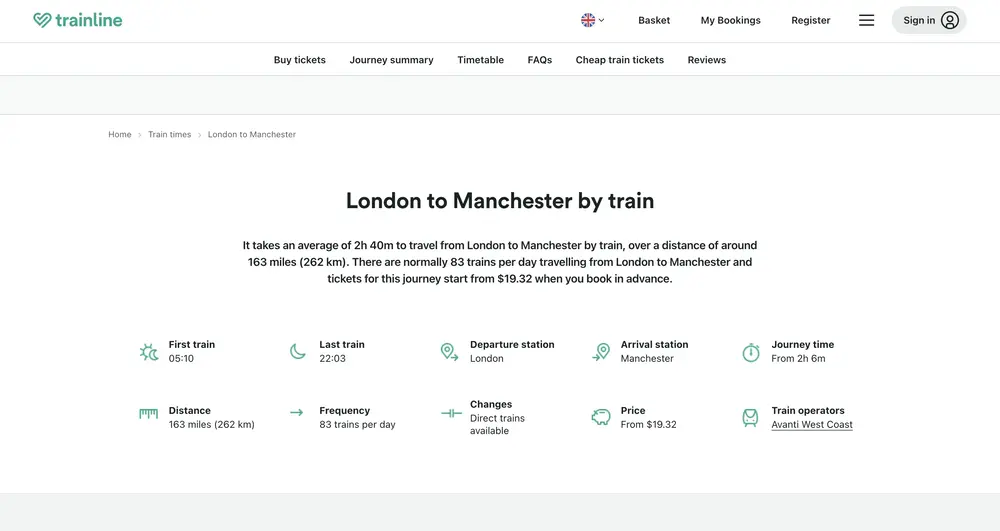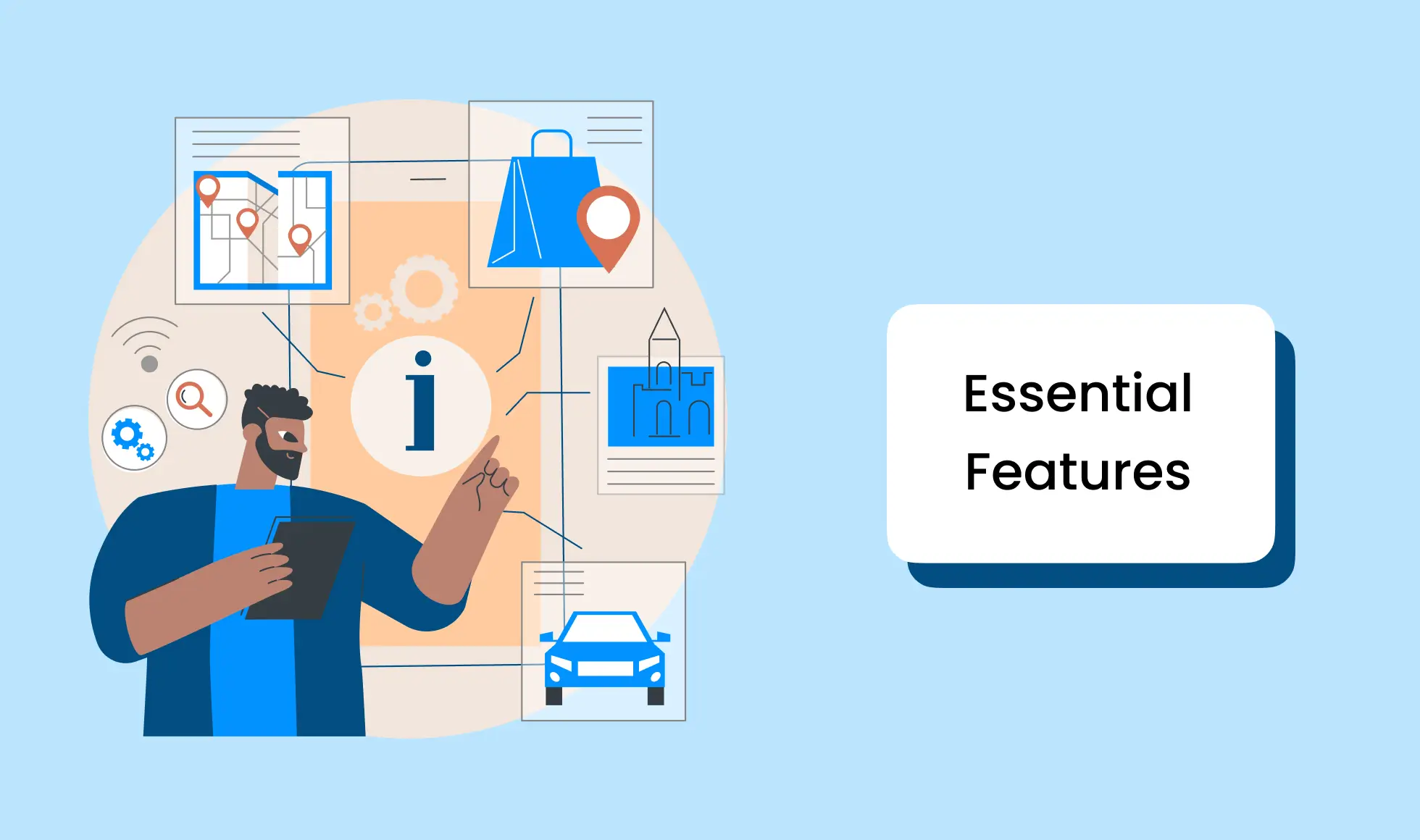Websites like Tripadvisor (one of the world's largest travel platforms) have revolutionized how people plan and experience travel. Travel directories have become essential tools for today's travelers, offering a wealth of information, reviews, and booking options. If you're inspired to create your own travel directory website, this guide will provide a roadmap to successful website development.
Step 1: Find Your Unique Brand Positioning
You can’t be everything, you need some specialization that people will remember you for. Here are some brand positioning inspiration of famous travel directory websites.
Focus on Accommodation:
- Airbnb: Offers unique and alternative accommodation options, focusing on connecting travelers with locals and creating a more authentic experience.
- Booking.com: Known for its wide variety of accommodation options at competitive prices.
- Hotels.com: Primarily focuses on hotels, offering loyalty rewards programs and deals specifically for hotel stays.
- PrestigeOnline.com: (Assuming this refers to Prestige Holidays) Caters to luxury travel experiences, featuring high-end accommodations and curated itineraries.
Focus on Activities and Experiences:
- Viator: Specializes in tours, activities, and experiences at destinations around the world.
Note: Tripadvisor falls in this category due to its nature of exploring options of things to do in any city.
Focus on Booking Services:
- Tripadvisor: While offering reviews and recommendations, Tripadvisor primarily focuses on directing users to booking platforms for flights and accommodation.
- Expedia: A full-service travel agency offering flights, hotels, vacation packages, and activities in one place.
- Priceline: Known for its "Name Your Own Price" feature on hotels, offering deals and discounts for budget-conscious travelers.
Focus on Specific Travel Segments:
- The Trainline: Focuses solely on train travel, offering booking and information specifically for train journeys.
- Trip.com: A Chinese travel agency offering comprehensive travel booking services, particularly popular in Asia.
Here’s what you can do to find the identity of your website.
- Identify Your Niche: Do you focus on budget travel for backpackers, luxury getaways for discerning travelers, or family-friendly adventures?
- Define Your Target Audience: Who are you building this website for? Solo backpackers, couples seeking romance, or multi-generational family trips?
- Research the Competition: Analyze existing travel directories within your chosen niche. Identify gaps in their offerings and opportunities to differentiate your platform.
Step 2: Build a Robust Database
The core of your website is the database. One amazing example of creating data driven content is Trainline. They can be taken as an inspiration for showing the right content in right format at right place. That's a perfect blend of content, data science, UI, and tech.

Here's how you can also create a comprehensive resource:
Travel Destinations, Attractions, Accommodations, and Restaurants:
Gather information on a wide range of travel options, catering to your target audience's interests.
User-Generated Content:
Encourage users to submit reviews, photos, and ratings to create a vibrant and trustworthy platform.
APIs:
Utilize APIs from travel providers like Google Maps and OpenTable to seamlessly integrate maps, directions, and reservation options.
Step 3: Design a User-Friendly Interface

A well-designed interface is crucial for a successful travel directory website. It should be intuitive, visually appealing, and optimized for both desktop and mobile users. Key elements of a user-friendly interface include:
Clean and Intuitive Design
A minimalist layout which is free from clutter and excessive information can create a more user-friendly experience. You can have a clear navigation using intuitive menus and breadcrumbs, and guide users through the website efficiently. Maintaining a consistent look and feel throughout the website enhances usability and reduces confusion.
Robust Search Functionality
Advanced search options like filtering by destination, activity, price range, and other relevant criteria, enable users to find the exact information they need. You can also auto-complete suggestions, it can improve search accuracy and efficiency by providing relevant options as users type.
Mobile Optimization
According to Sistrix, 64% of searches are done on the phone. Hence, you need to ensure your website is responsive and adapts to different screen sizes and orientations is essential for a seamless mobile experience. You can add more touch-friendly elements such as buttons and links that are easy to tap on mobile devices, contributing to a positive user experience.
Also, make sure that your web pages load with lighting speed. Fast page load is crucial for keeping mobile users engaged and preventing them from leaving the website due to slow performance.
Travel-Specific Themes
Utilizing pre-designed travel directory themes can accelerate development and create a visually appealing website. These themes often offer customizable elements, allowing you to tailor the design to your brand and preferences. Additionally, many travel-specific themes integrate seamlessly with travel-related features like maps, itineraries, and booking options, providing a more comprehensive and user-friendly experience.
If you need help with designing your website, then our UI-UX experts can help you create amazing wireframes that streamlines user experience.
Step 4: Implement Essential Features

Functionality is critical for user engagement. A well-equipped travel directory website should offer a range of features to enhance the user experience:
» Search Functionality
- Advanced search options: Allow users to refine their searches by destination, activity, price range, travel style, and other relevant criteria.
- Geolocation-based search: Enable users to find nearby attractions and accommodations based on their current location.
- Auto-complete suggestions: Suggest relevant destinations, activities, or accommodations as users type, saving them time and effort.
» User Profiles
- Personalized recommendations: Use user data to suggest tailored travel experiences based on their preferences and past behavior.
- Saved favorites: Allow users to save their favorite destinations, accommodations, and activities for easy reference.
- Travel history: Enable users to track their past trips and create itineraries for future adventures.
» Booking Integration
- Direct bookings: Partner with travel booking platforms to offer users seamless booking options for flights, accommodations, tours, and activities.
- Price comparison: Provide users with options to compare prices from different providers and find the best deals.
- Secure payment gateways: Ensure a safe and secure payment process to build trust with users.
» Social Media Integration
- Sharing features: Allow users to easily share their travel experiences on social media platforms, encouraging others to explore your website.
- Social login: Enable users to sign up or log in to your website using their existing social media accounts.
- Social proof: Display social media reviews and ratings to build trust and credibility.
» Community Forums
- Discussion topics: Create forums for users to discuss travel experiences, ask questions, and share tips with other travelers.
- Moderation: Monitor and moderate forums to ensure a positive and respectful environment.
- Reputation system: Implement a reputation system to encourage helpful and informative contributions.
When you incorporate these essential features, you will have a travel directory website that not only provides valuable information but also fosters a sense of community and encourages user engagement.
Step 5: Lay Foundation of Growth While Developing Website
While developing your travel directory website, it's essential to consider strategies that will contribute to its long-term success. Here are some key areas to focus on:
SEO (Search Engine Optimization)
SEO is very crucial for user acquisition and hence you need to include the following data points when the website is in the development phase. Otherwise you will end up in the loop of reoptimization of the website which will be a waste of your resources.
- Keep a clear site architecture: Don’t confuse visitors or Google’s crawlers with random pages. Follow proper folder structure and follow best practices for URLs.
- Proper schema for all pages: Schema markup can help your website appear in search results with rich snippets, increasing click-through rates.
- Optimal Pagespeed: Your page speed is directly linked to user experience. Faster loading speed means better user engagement with the page.
- Mobile first UI/UX:
Content Marketing
High-quality content not only engages your audience but also provides valuable information for search engines, helping to improve your website's ranking. Incorporate visually appealing elements like images, videos, and infographics when you develop your website. This will help you make your website’s content more engaging.
Social Media Marketing
Active engagement on social media platforms can help build brand awareness, foster a sense of community, and drive traffic to your website.
- Active engagement: Start by regularly interacting with your audience on social media platforms by responding to comments, messages, and reviews.
- Paid advertising: Consider using paid social media advertising to reach a wider audience and drive traffic to your website.
- Contests and giveaways: Run contests and giveaways to encourage user engagement and generate buzz around your brand.
Email Marketing
Building an email list allows you to nurture relationships with your audience, provide personalized content, and drive repeat business. You can keep an option of subscribing to your updates about new travel destinations from your website.
- Email list building: Collect email addresses from visitors to your website and build a targeted email list.
- Personalized content: Send personalized email newsletters with relevant travel tips, deals, and exclusive content.
- Email automation: Use automation tools to send triggered emails based on user behavior (e.g., welcome emails, abandoned cart reminders).
Revenue Model Ideas For Your Travel Website

Once your website gains traction, consider these monetization methods:
- Advertising: Display targeted advertising on your website.
- Affiliate Marketing: Partner with travel companies to earn commissions on bookings generated through your website.
- Premium Memberships: Offer exclusive features and content for paid memberships.
- Direct Sales: Sell travel products or services like tours, travel insurance, or customized itineraries.
Need Help in Developing a Travel Website Like Tripadvisor?
Building a successful travel directory website requires planning, execution, and continuous improvement. By following these steps, creating a unique platform, and fostering a thriving community, you can turn your travel directory into a valuable resource for travelers everywhere.
If you need help with web development, then our team is willing to give you a boost to your dream website.
Remember, you need to stay updated on travel trends, adapt to user needs, and be patient as your website grows into a trusted travel companion for your target audience.
FAQ Section
1. What type of tech stack is best for building travel website from SEO perspective?
Choosing the right tech stack is crucial for building a travel website that is both user-friendly and optimized for search engines. While there are many options available, here are some popular choices:
- Front-end: HTML, CSS, JavaScript, React or Vue.js
- Back-end: PHP, Python, or Ruby on Rails
- Database: MySQL or MongoDB
- CMS: WordPress, Drupal, or Joomla
- SEO Tools: Rank Math, Google Search Console, Google Analytics
2. What are some best practices for developing a travel website?
Here are the three most basic but important practices that your team needs to follow while developing a travel website:
» Mobile-first approach: Design your website with mobile devices in mind to ensure a good user experience for all visitors.
» Fast page load times: Optimize your website's speed to improve user experience and search engine rankings.
» Clean code: Write clean, well-structured code to make your website easier to maintain and update.
3. How much does it cost to create a travel directory website?
The cost of creating a travel directory website depends on various factors, including the size and complexity of the website, the features you want to include, and the development team you hire. To give an estimation, it can cost you around $15,000 - $30,000 to build a complete travel website.
How long does it take to create a travel directory website?
The development time for a travel directory website can vary depending on the scope of the project and the resources available. However, it typically takes 2-3 months to build a fully functional website.
How can I populate my travel directory website with high-quality content?
You can start by creating original content while also curating content from other sources, and encourage user-generated content. You can also experiment with APIs from travel providers to access data on destinations, attractions, and accommodations.





